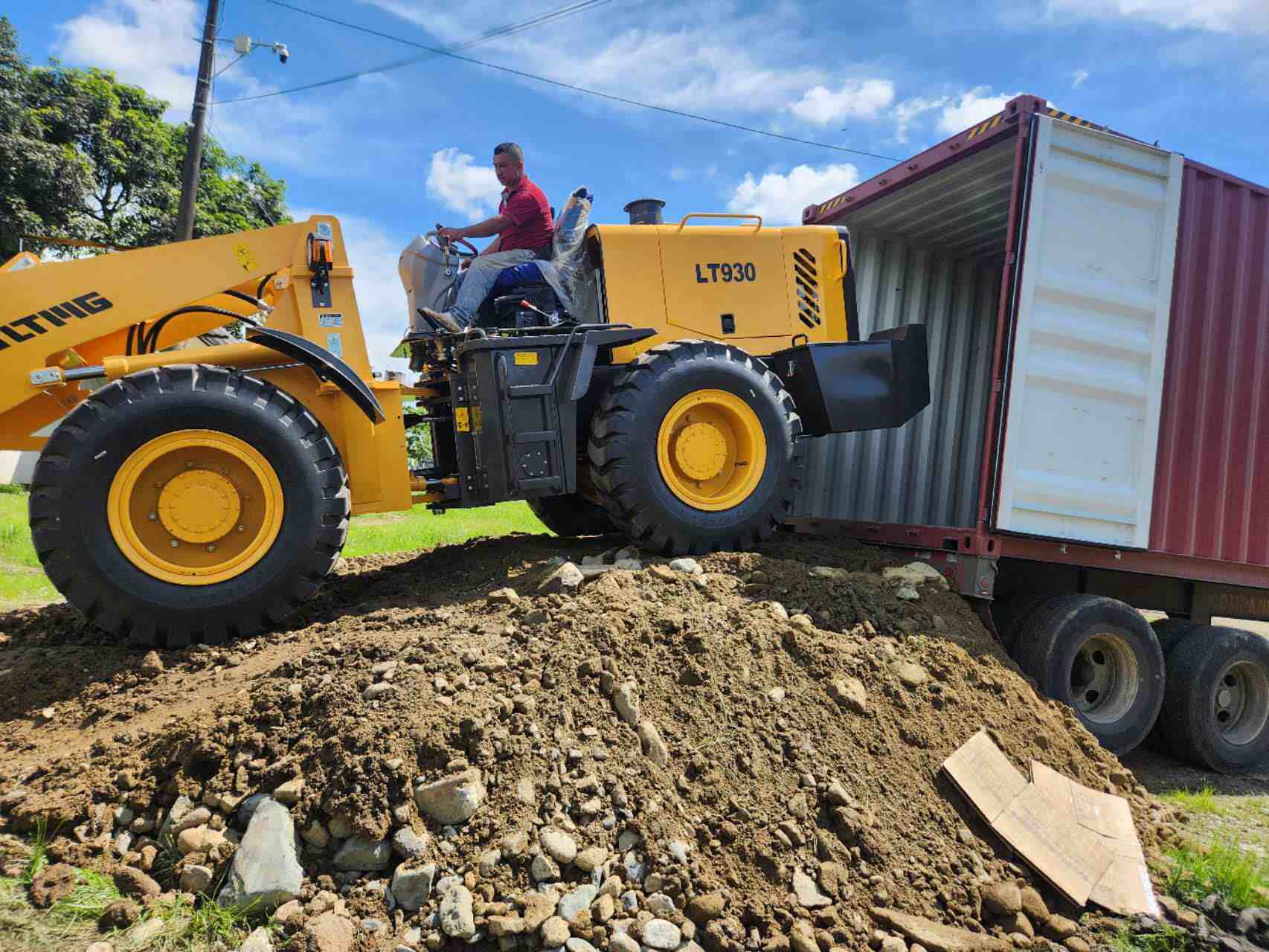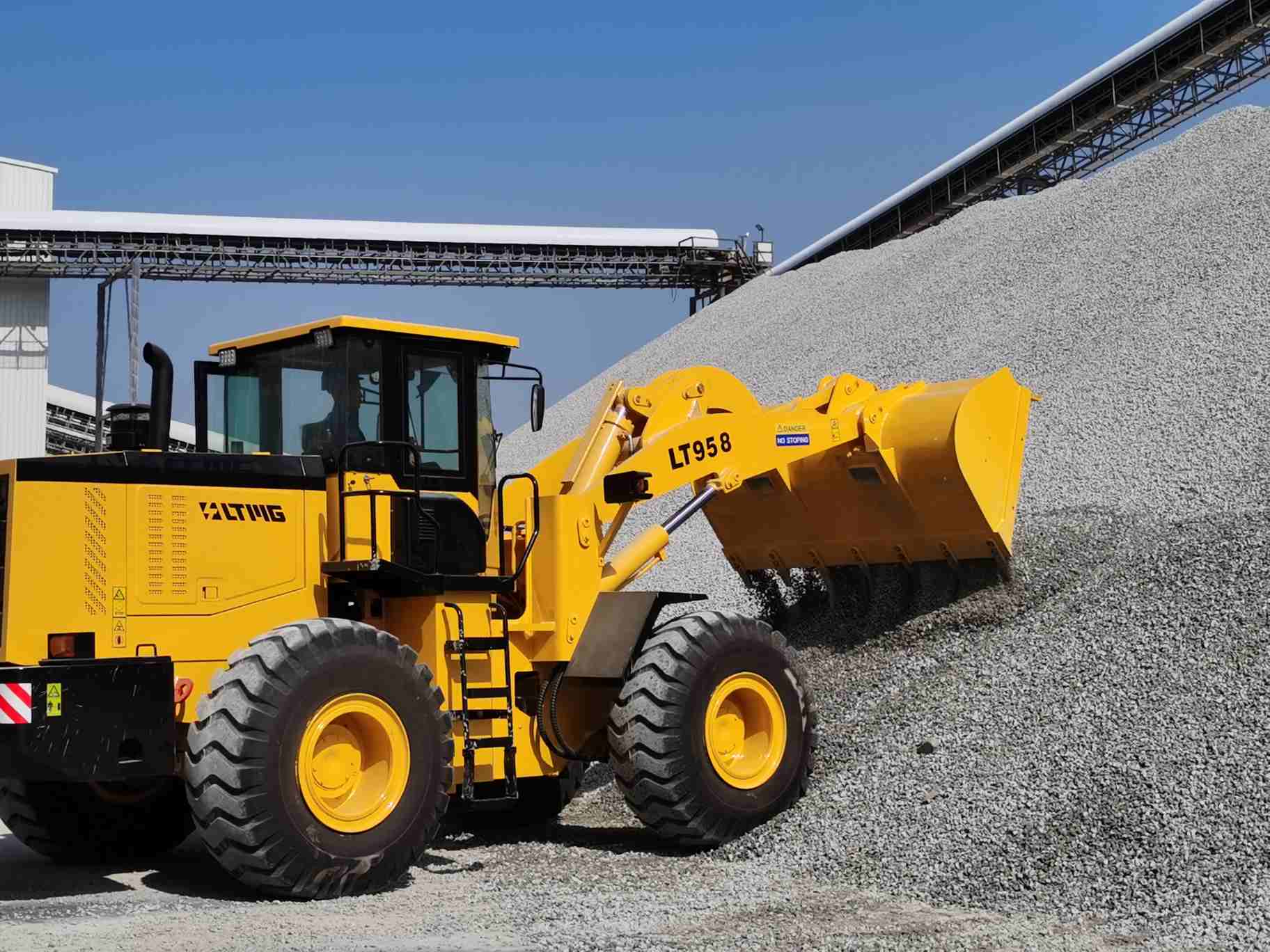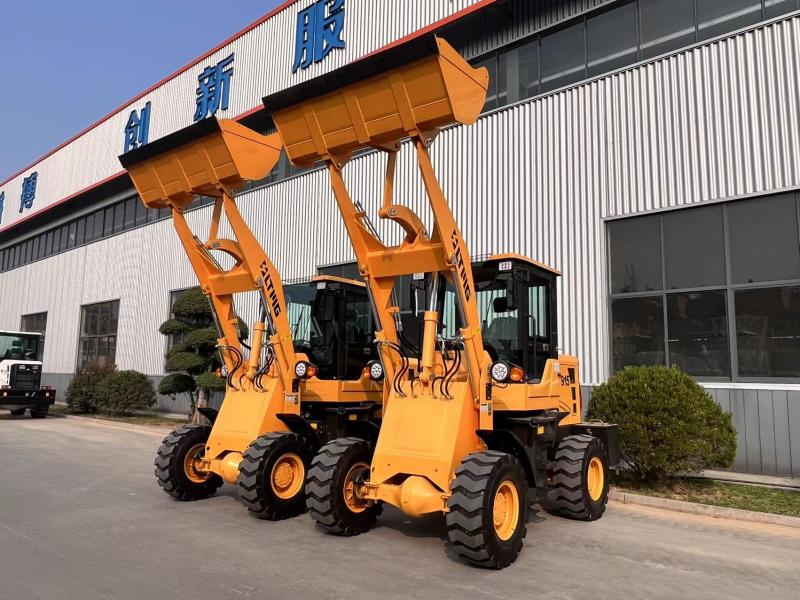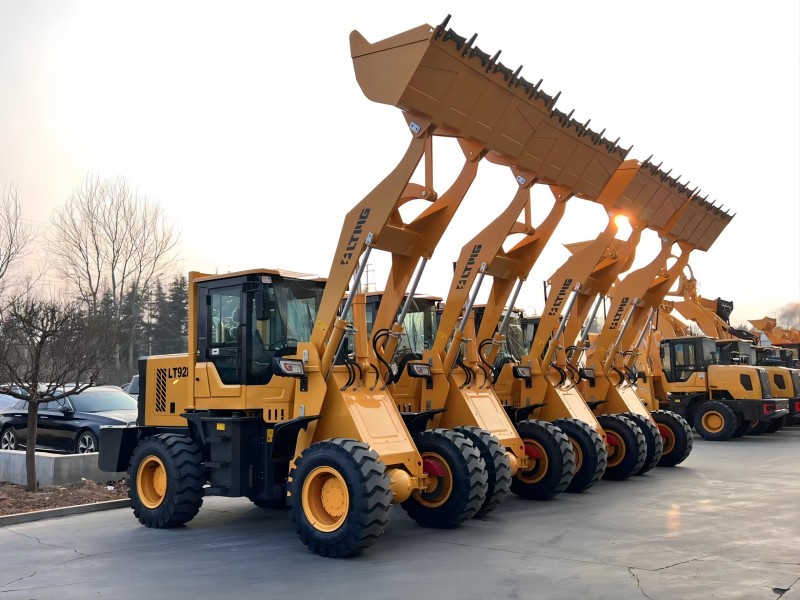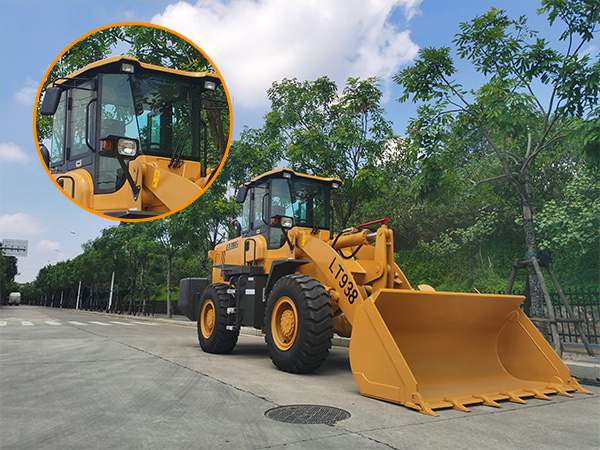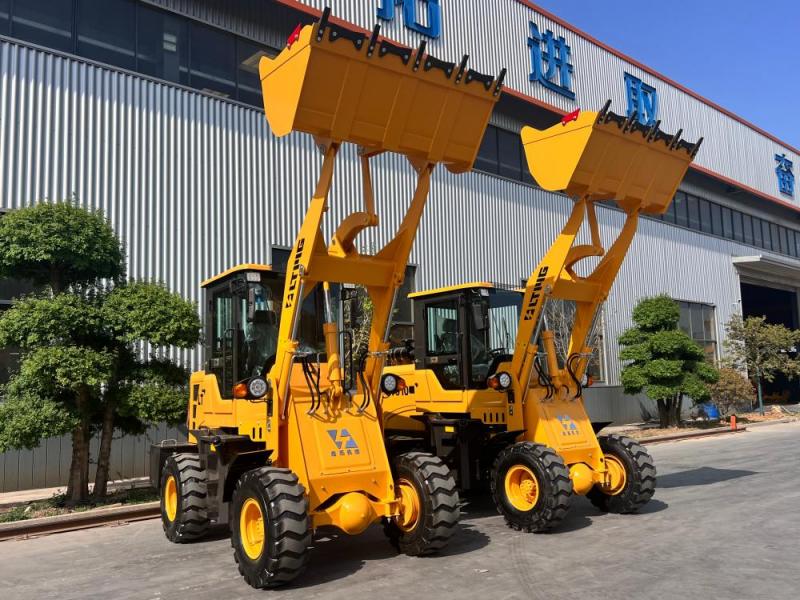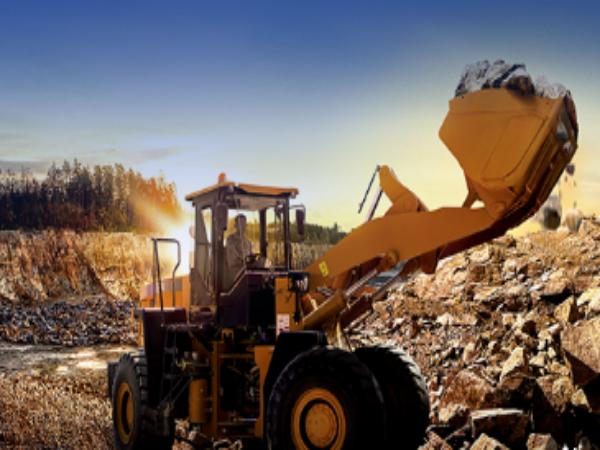What Is An Articulated Wheel Loader?
May 10, 2024
An articulated wheel loader is a kind of wheel loader with an articulated frame structure, whose main features include a small turning radius, maneuverability, and lateral stability, and the articulated structure is adopted to improve the flexibility and adaptability of the machine, especially the ability to work in narrow or complex terrain. By adopting central articulation or front and rear articulation, this type of loader makes the trajectory of front and rear wheels consistent, which reduces steering resistance and tire wear, and improves work efficiency and safety.
The design of articulated wheel loaders also takes into account the convenience and comfort of operation. For example, some models are equipped with a high-level auto-leveling working device and a dust sealing and lubricating structure of the working device articulation part, which are designed to improve the reliability of the loader and the comfort of the operator. In addition, some articulated wheel loaders also adopt load-sensing full hydraulic steering systems, which can prioritize steering needs while ensuring effective coordination between the steering hydraulic system and the work unit.
From a historical perspective, China's first articulated wheel loader, the LiuGong z450, was designed with an integral frame and rear-wheel steering, a structure that represented a certain technical level at the time, but compared with later articulated wheel loaders, it was deficient in both maneuverability and flexibility. With the development and improvement of technology, the design and performance of articulated wheel loaders have been continuously upgraded, and they have become an indispensable part of modern construction machinery.
In practical application, articulated wheel loaders are commonly used in various environments such as construction sites, port terminals, station yards, etc., for handling loose materials such as soil, gravel, coal, etc., and also for hauling, leveling, stacking, and depalletizing operations. Due to its unique structure and function, the articulated wheel loader occupies an important position in the field of modern construction machinery.
How to compare the performance and application scenarios of articulated wheel loaders with other types of loaders?
Comparison of articulated wheel loaders with other types of loaders in terms of performance and application scenarios can be analyzed in the following aspects:
1. Performance Characteristics:
(1) Articulated wheel loaders usually have better passability and operational flexibility. For example, the centering arrangement of the front and rear frame hinge points of the JGM757-II wheel loader makes the front and rear wheel tracks overlap when steering, which improves the passability, and at the same time, the key hinge points of the working device adopt a dustproof structure, which extends the service life of the pins.
(2) In contrast, other types of loaders, such as track loaders, although also possessing good maneuverability, may not be as flexible and passable as articulated wheel loaders under certain operating conditions.
2. Application Scenarios:
(1) Articulated wheel loaders are suitable for a wide range of complex terrains and environments due to their excellent passability and maneuverability. For example, the XCMG WZ30-25B backhoe loader integrates digging and loading and can be equipped with a variety of attachments, which are suitable for several operations such as digging, shoveling, transporting, and leveling the site.
(2) Other types of loaders, such as the Komatsu WA380-6 loader, are designed for specific light-duty operations, such as shoveling and loading of loose materials and short-distance transportation, and are suitable for scenarios such as highways, railroads, and ports.
3. Technology and Innovation:
(1) The articulated wheel loaders are constantly innovating in terms of technology. For example, the Cat® 966 GC wheel loader adopts an advanced hydraulic system and control device, which can significantly improve the full bucket factor and reduce fuel consumption.
(2) Other types of loaders are also pursuing development in the direction of high efficiency, energy saving, and emission reduction, for example, the Shandong Lingong L968HEV wheel loader adopts dual-way braking energy recovery technology, which improves energy efficiency and range.
To summarize, articulated wheel loaders show high flexibility and adaptability in performance, especially in complex terrain and the need for frequent changes in the operating environment is more prominent. Other types of loaders show their specialized strengths in specific areas of operation (e.g. light material handling).
What are the market shares and major manufacturers of articulated wheel loaders?
First of all, regarding the market share, it can be inferred that articulated wheel loaders are in high demand in specific fields, especially in the small articulated loader (wheeled mini loader) industry, where a certain field occupied the largest market share in the industry in 2022. Moreover, the birth of the first articulated wheel loader in China marked the beginning of the development of this technology in the country, and its market share has increased from 2010 to date.
Internationally recognized manufacturers include Bobcat, CAST Loaders, Kubota, and others. These companies cover a wide range of articulated wheel loaders, from small to large, and some of them, such as Volvo, also have a global presence, Volvo has introduced large wheel loaders with articulated steering since the early 1970s.
As a renowned Chinese manufacturer of loaders, LTMG presents the Compact Articulated Wheel Loader, a versatile solution for diverse material handling needs. As a renowned Chinese manufacturer of loaders, LTMG presents the Compact Articulated Wheel Loader, a versatile solution for diverse material handling needs. This loader boasts advanced features such as hydrodynamic transmission technology, a separated gearbox, and a torque converter, ensuring Offering 2 forward and 2 reverse gears, it delivers flexibility and ease of use across various working environments. The load-sensing fully hydraulic steering system provides precise control, while the compact design allows for maneuverability in tight spaces without compromising performance. Experience the efficiency and reliability of the LTMG Compact Articulated Wheel Loader for your next project.
How well do articulated wheel loaders perform in terms of environmental protection and sustainability?
The performance of articulated wheel loaders in terms of environmental protection and sustainable development is mainly reflected in the following aspects:
1. Energy saving and emission reduction: articulated wheel loaders improve energy efficiency and reduce energy consumption by adopting new box structures, wide articulation design, and technologies such as merging hydraulic systems and electromagnetic clutch fans, thus reducing carbon and exhaust emissions.
2. Enhance operational efficiency: The design optimization of articulated wheel loaders, such as the use of imported Cummins engines, not only ensures power and reliability but also enhances the efficiency and stability of the loaders through highly efficient and environmentally friendly technical means. In addition, the popularization and use of electric loaders have brought about the reduction of comprehensive costs, including the reduction of fuel use costs and maintenance costs, which is of great significance for improving the sustainable development of the whole industry.
3. Promote green and low-carbon development: the development and application of articulated wheel loaders is a concrete practice in response to the national policy of energy conservation and emission reduction, green and sustainable development. Especially with the new energy loader, the average annual working time can significantly reduce carbon emissions and carbon dioxide emissions, which helps to promote the whole society to green low-carbon transformation.
